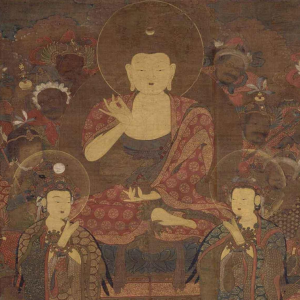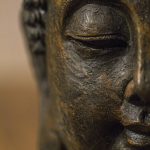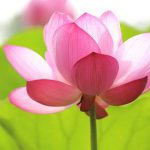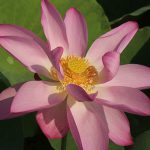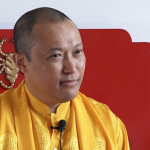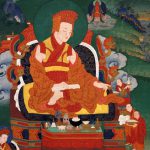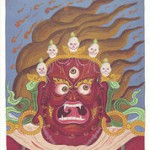Thursday
Dying & Death Classes on Shambhala Online
By Alley Smith

Death is the greatest of all teachers. –The Buddha
Shambhala Online has been offering a variety of courses on topics related to dying and death. These topics enable the sangha and outside community members to gather and think about death, engage in contemplative practices, and toil with topics such as fear, anxiety, the unknown, and how to have conversations about death.
The Shambhala community is gathering with purpose: to understand the dying process, to recognize and articulate the role of spiritual, religious and existential support, practices, and cultural norms within the modern Buddhist context. The result is tremendous openness and courage to face the inevitable and unknown in a gentle and relaxed way.
As Chögyam Trungpa Rinpoche says, Life is painful with an occasional speck of pleasure. We are born, we get old, we experience sickness, and, last but not least, we die. We are each waiting to die. I’m afraid that is the bad news. Whether you are young or old doesn’t make much difference – everybody will eventually die. So now is the time to do something with your life. We are not interested in developing eternity or immortality, or in preventing being sick or being born. We are interested in doing something while we are alive, while we are breathing, while we see the beauty of the snow, the flowers, the blue sky, the sunshine and many other things we can imagine.
While we are alive we can explore our personal belief systems about dying and death, our struggles, vulnerabilities, strong emotions, personal values, needs, and much more. Death has so much to teach us. Even as the Buddha was dying, he taught that suffering (dukkha) comes from not living in accordance with the truth of impermanence and interdependence. Death itself is a profound spiritual transmission.
Students have been gathering across the global community at Shambhala centers in Seattle, Dallas, Halifax, Los Angeles, and Philadelphia to offer support and practice advice. Communities are interested and invested in doing something while they are alive, while breathing, to be embraced by the sangha, to be met with unconditional kindness and the warmth of the Great Eastern Sun.
In the end, everything is left up to the individual. Therefore, most Buddhists do not take the truth of impermanence half-heartedly. Whether we are studying the Tibetan Book of the Dead, teachings of Amitabha Buddha, the Pure Lands, Sukhavati, Bodhichitta, the Bardos, and a vast array of teachings, we must do as many great Rinpoches and Tibetan lamas suggest. Engage in whichever practices are clearest, familiar, and most vivid on our deathbeds.
While we are alive we must be willing to face old age, sickness, and death with confidence and fearlessness. We must abandon any notion of resentment and attachment. Ask yourself, why would the Buddha say, Death is the greatest of all teachers? What can we learn from his words? In the end, as Trungpa Rinpoche says, “It’s up to you sweetheart.”
Shambhala Online would like to invite you to attend any one of these upcoming sessions in 2025:
Fear & Fearlessness: Navigating Life & Loss
March 27. During this online session, we will explore Chögyam Trungpa Rinpoche’s teachings on “Fear and Fearlessness” from the timeless classic, Shambhala: The Sacred Path of the Warrior.
The Buddha’s Discourse on Teachings to Be Given to the Sick
November 1. During this mini-retreat, we will read and explore the Buddha’s Discourse on the Teachings to Be Given to the Sick. We will examine traditional Buddhist teachings on the six senses, six sense objects, six elements, the five aggregates, and more.
Making Friends with Death & Dying: Support Group (1st Monday night of every month)
Next session April 7. Support group sessions will include a short talk, meditation practice, and an open forum to discuss personal experiences with old age, sickness, death, grief and bereavement. All are welcome. We respect your privacy. These sessions will not be recorded.
The 49 Day Ceremony: A Celebration of Life & Death
December 13. Join Chaplain Alley Smith for a 3-hour online mini-retreat as she guides participants into a deeper understanding of the 49 Day Ceremony and the common Buddhist practices and rituals that follow someone’s death – all within a modern Buddhist context.
Alley Smith (she/her) is an ordained Zen Buddhist Chaplain, scholar, researcher, and lecturer who serves at a college and university. Alley is deeply influenced by Pure Land Buddhism and Vajrayana. She has been a member of Shambhala and Zen since 1999. Alley works in the funeral industry in Vermont. She teaches a number of courses on Shambhala Online.
Entries filed under Dharma Teachings
The Heart Sutra – HIGHLIGHT
An explication of The Sutra of the Heart of Transcendent Knowledge by Russell Rodgers The “Heart Sutra” is chanted by Mahayana practitioners all over the world. You could do it at home to start your meditation. Its full title is “The Sutra of the Heart of Transcendent Knowledge.” ... continuePosted October 23, 2016 by CGH
Súplica de Longevidad
por Russell Rodgers Al igual que los otros cantos de longevidad, este evoca por completo el poder de la devoción. Para los gurús auténticos, la devoción de los estudiantes es lo que les prolonga la vida. Puesto que son boddhisattvas, existen para servir y, ya que no ... continuePosted October 23, 2016 by CGH
La Dedicación de Mérito de Shambhala
por Russell Rodgers Que por la confianza del áureo Sol del Gran Este, florezca el jardín de lotos de la sabiduría del Rigden. Que se disipe la oscura ignorancia de los seres sensibles. Gocen de profunda y brillante gloria todos los seres. En general, dedicar el mérito nos hace prestar atención ... continuePosted October 22, 2016 by CGH
Supplication to the Takpo Kagyu – HIGHLIGHT
We continue exploring the Shambhala chants with a look at the Kagyu lineage supplication by Russell Rodgers Kagyu Monlam, The Kagyu lineage is one of the three main Tibetan lineages that form the basis of Shambhala Buddhism. Each of these lineages contributed a unique approach to enlightenment. The particular ... continuePosted October 21, 2016 by CGH
Seven-Line Supplication to Padmakara – HIGHLIGHT
Our series on the Shambhala chants continues, with the traditional supplication to Padmasambhava by Russell Rodgers HUM In the northwest of the land of Uddiyana, On a blooming lotus flower, You have attained supreme, wondrous siddhi. You are renowned as Padmakara, Surrounded by your retinue of many dakinis. ... continuePosted October 19, 2016 by CGH
Moissons de la Paix
Allocution du Kongma Sakyong Mipham Rinpoche 25 septembre 2016 Kongma Sakyong Moissons de la Paix 2016 Bonjour à tous. Je vous souhaite un Joyeux Jour des Moissons de la Paix et une belle saison des moissons. C’est un moment important pour nous tous lorsque nous réunissons alors que les ... continuePosted October 17, 2016 by CGH
Peace is in the Heart – HIGHLIGHT
A Harvest of Peace video message from Sakyong Mipham Rinpoche Click here to see the video, or read on for a transcript of the talk. Click here for a French-language translation. continuePosted September 25, 2016 by CGH
The Four Dharmas of Gampopa – HIGHLIGHT
Having looked at the Shambhala Dedication of Merit earlier this week, our attention now turns to a traditional opening chant by Russell Rodgers Gampopa Grant your blessings so that my mind may be one with the dharma. Grant your blessings so that dharma may progress along the path. Grant your blessings ... continuePosted September 15, 2016 by CGH
The Shambhala Dedication of Merit – HIGHLIGHT
Delving into the context and deeper meaning of this familiar dedication chant by Russell Rodgers By the confidence of the golden sun of the great east, May the lotus garden of the Rigden’s wisdom bloom. May the dark ignorance of sentient beings be dispelled, May all beings enjoy profound brilliant glory. In ... continuePosted September 13, 2016 by CGH
Synchronizing Body and Mind – HIGHLIGHT
by Shastri Kim Kelso When we meditate we are practicing synchronizing mind and body. We are giving ourselves a chance to collect ourselves. Often our body is ahead of our mind or our mind is ahead of the body, or our body is sitting in the room ... continuePosted September 5, 2016 by CGH
Aspiration of Shambhala – HIGHLIGHT
Our commentator on the Shambhala chants turns his attention to the aspiration by Russell Rodgers In the midst of our river of habitual thoughts, we tend to forget what is most important to us. Aspiration chants are reminders. If we consciously aspire to something, it’s more likely to ... continuePosted August 26, 2016 by CGH
Longevity Supplication – HIGHLIGHT
In our ongoing series on the Shambhala chants, we consider a supplication for the longevity of Sakyong Mipham Rinpoche by Russell Rodgers As with other longevity chants, this one is all about the power of devotion. For genuine gurus, it is the devotion of their students that prolongs ... continuePosted August 24, 2016 by CGH
The Shambhala Protector Chant – HIGHLIGHT
In our continuing series on the Shambhala chants, we take a look at protectors manifesting as coincidence. by Russell Rodgers A constant stream of coincidence shapes our lives. You get up in the morning. It’s raining and that always makes you depressed. There’ s a traffic jam on the ... continuePosted August 22, 2016 by CGH
The Protector Ritual – HIGHLIGHT
A long-time student ruminates on the practice of protector chants in Shambhala ritual by Russell Rodgers The protector chants have been causing controversy at centres since Trungpa Rinpoche first asked us to start doing them over thirty years ago. Periodically, members argue over whether or not it is ... continuePosted August 18, 2016 by CGH
Supplicating the Shambhala Lineage – HIGHLIGHT
An explication of the chant known as the Supplication to the Shambhala Lineage by Russell Rodgers In this chant, Sakyong Mipham Rinpoche acknowledges the sources of the Shambhala Lineage. There were four main lineages in Tibet: the Gelugpa (the Dalai Lama’s lineage), the Sakya, the Kagyu and the ... continuePosted August 16, 2016 by CGH
![]() RSS feed for the Dharma Teachings category
RSS feed for the Dharma Teachings category
View all posts from authors in Dharma Teachings: jillian_johnson



